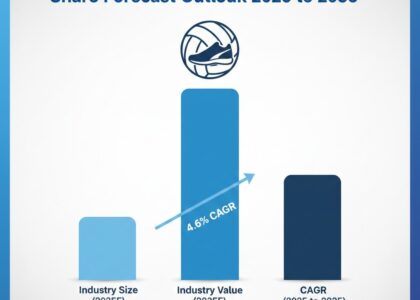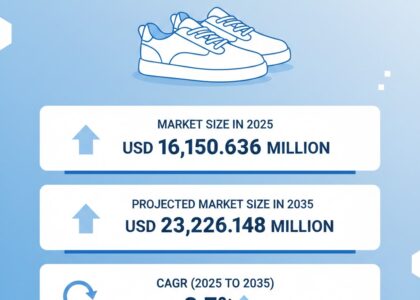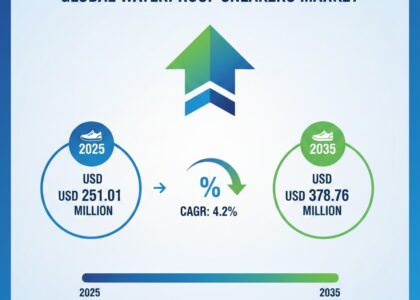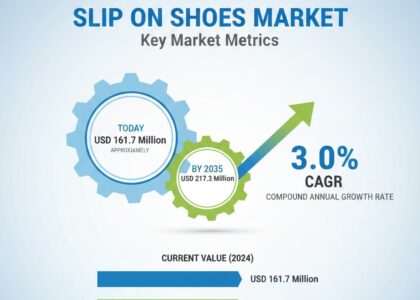
The barrier packaging market share analysis is expected to grow significantly, with projections estimating a market value of USD 24.82 billion by 2035, expanding at a CAGR of 2.8%. This growth is driven by a fusion of technology, sustainability imperatives, and ever-evolving consumer expectations.
The barrier packaging market is poised for significant expansion over the next decade, driven by evolving consumer needs, sustainability pressures, and stringent regulatory standards. With its core function being the preservation of product integrity, barrier packaging serves as a critical component across industries such as food & beverages, pharmaceuticals, and personal care.
At its core, barrier packaging refers to materials designed to form a protective shield around a product, keeping out harmful elements such as air, moisture, chemicals, and light. This ensures extended shelf life, improved product stability, and protection against spoilage.
Discover Market Opportunities – Get Your Sample of Our Industry Overview Today!
https://www.futuremarketinsights.com/reports/sample/rep-gb-20920
Barrier packaging typically uses specialized films, coatings, and laminates like aluminum foil, EVOH (ethylene vinyl alcohol), PVDC (polyvinylidene chloride), and multilayer plastic composites. These materials are engineered to maintain the integrity of sensitive items, particularly in food & beverages, pharmaceuticals, personal care, electronics, and chemicals.
Advanced Protection Driving Demand in Perishable Goods Sector
Barrier packaging materials are engineered to prevent the passage of oxygen, moisture, gases, UV light, and other environmental contaminants, thereby extending the shelf life of sensitive goods. In the food industry, which represents a major portion of the market, spoilage due to oxidation, microbial contamination, and dehydration can severely impact profitability and safety.
The rise of convenience-based food consumption, along with the growth of e-commerce grocery platforms, has further pushed the demand for reliable and efficient packaging. Brands are now prioritizing materials that ensure maximum product freshness and reduced food waste, creating a fertile environment for high-performance barrier packaging.
Key Takeaways From the Barrier Packaging Market Share Analysis
- North America holds the largest share (35%) of the barrier packaging market, driven by a strong focus on food safety and pharmaceutical packaging standards.
- Europe follows with 30% market share, propelled by stringent sustainability regulations and adoption of advanced manufacturing technologies.
- Asia-Pacific accounts for 25%, supported by rapid expansion in packaged food consumption and healthcare sectors.
- Other regions make up the remaining 10%, fueled by rising demand for affordable and durable packaging solutions in emerging economies.
Sustainable Packaging Solutions Creating New Growth Pathways
One of the most defining trends shaping the barrier packaging market is the shift toward sustainability. Traditional multi-layer films and plastic laminates, while effective, often pose recycling challenges. As consumers and governments push for eco-friendly alternatives, manufacturers are innovating with bio-based and recyclable barrier films.
New developments include mono-material barrier solutions made from polyethylene (PE) or polypropylene (PP), which offer excellent barrier protection while being compatible with existing recycling streams. Compostable films derived from cellulose or PLA (polylactic acid) are also entering the mainstream, especially in personal care and organic food packaging.
Rising Pharmaceutical Applications Fueling Innovation
The pharmaceutical industry places a premium on packaging that ensures product stability, sterility, and safety, especially for sensitive formulations like biologics, injectables, and effervescent tablets. Barrier packaging plays a pivotal role in meeting Good Manufacturing Practices (GMP) and compliance with FDA and EMA regulations.
Blister packaging, strip packs, and sachets with high oxygen and moisture barrier layers have become standard. Additionally, the growing demand for unit-dose packaging and patient-centric drug delivery systems has propelled the need for high-performance barrier films with excellent sealing and tamper-evident features.
Technological Advancements Transforming Material Performance
Technology is redefining the capabilities of barrier materials. Nanocoatings, metallized films, plasma treatments, and atomic layer deposition (ALD) are some of the cutting-edge methods enhancing packaging functionality. These technologies improve barrier performance while reducing material thickness, allowing manufacturers to minimize packaging weight without compromising protection.
Advancements in multi-layer co-extrusion and smart packaging integration are also unlocking new opportunities. For example, sensors embedded within barrier layers can detect temperature excursions or breaches in packaging integrity, critical for cold chain logistics and sensitive pharmaceuticals.
Competitive Landscape: Who’s Leading the Charge?
The barrier packaging market is a blend of established giants and agile innovators. Key players are focusing on strategic collaborations, acquisitions, and R&D investments to stay ahead.
Noteworthy Players:
- Amcor: Invested in recyclable and high-performance barrier solutions.
- Berry Global: Expanded offerings in multilayer and flexible materials.
- Sealed Air: Focused on protective and eco-friendly packaging innovations.
Barrier Packaging Market Share Analysis Segmentations
By End-user:
- Food Packaging
- Pharmaceuticals
- Personal Care
- Industrial Applications
By Region:
- North America
- Europe
- Asia-Pacific
- Other Regions
About Future Market Insights (FMI)
Future Market Insights, Inc. (ESOMAR certified, recipient of the Stevie Award, and a member of the Greater New York Chamber of Commerce) offers profound insights into the driving factors that are boosting demand in the market. FMI stands as the leading global provider of market intelligence, advisory services, consulting, and events for the Packaging, Food and Beverage, Consumer Technology, Healthcare, Industrial, and Chemicals markets. With a vast team of over 400 analysts worldwide, FMI provides global, regional, and local expertise on diverse domains and industry trends across more than 110 countries.
Contact Us:
Future Market Insights Inc.
Christiana Corporate, 200 Continental Drive,
Suite 401, Newark, Delaware – 19713, USA
T: +1-347-918-3531
For Sales Enquiries: sales@futuremarketinsights.com
Website: https://www.futuremarketinsights.com
LinkedIn| Twitter| Blogs | YouTube





